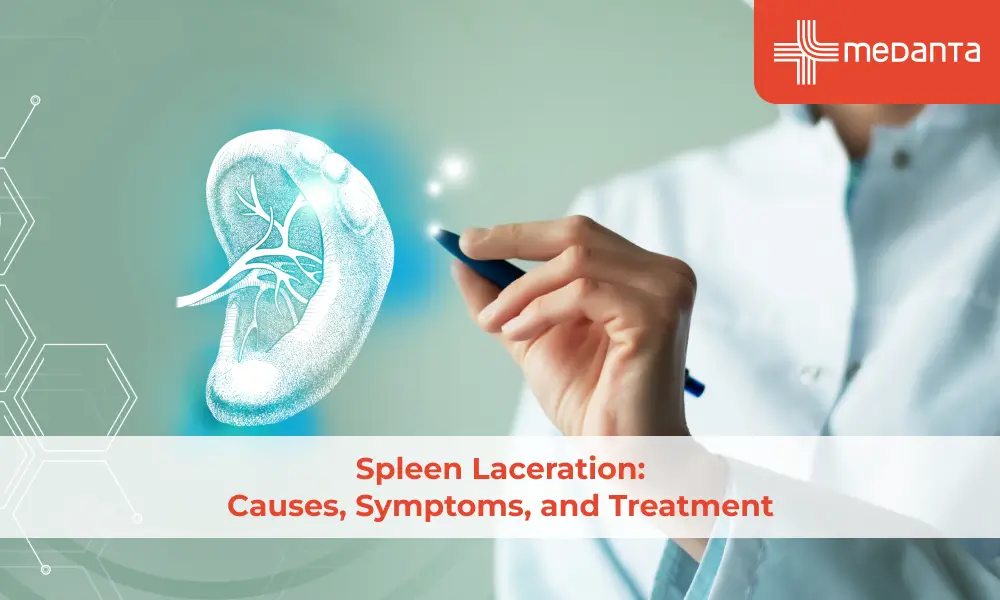Robotic Partial Nephrectomy: Recovery Tips for Faster Healing and Better Outcomes

Do you have a severe kidney disease, such as smaller kidney tumours? Or did you suffered from a major injury that damaged your kidney? Is only a part of your kidney affected? If you meet these requirements, the doctor might advise you to undergo a partial nephrectomy procedure.
With the advancements in nephrectomy, many surgeons are now using robotic systems to perform kidney surgeries. According to statistics, the proportion of robot-assisted partial nephrectomy surgeries increased from 20% to 49% between 2009 and 2012. Healthcare professionals and patients prefer robotic kidney surgeries because they offer a minimally invasive solution to kidney tumours and injuries.
However, successful surgery is just the beginning. You also need to pay attention to your recovery phase to ensure long-term health and wellness. In this article, you can learn some effective recovery tips to heal quickly from robotic partial nephrectomy with improved outcomes.
What is a Robotic Partial Nephrectomy?
A robotic partial nephrectomy is a minimally invasive surgical procedure wherein the surgeon makes use of the robot’s arms to move much more precisely in hard-to-reach areas inside the patient’s kidneys. You might be an ideal candidate for a robot-assisted partial kidney surgery if having a small kidney tumour or if removing your entire kidney can lead to organ failure and end up needing dialysis.
Other than that, the following conditions might require a robotic partial nephrectomy surgery as a treatment:
- Early-stage kidney cancer
- Benign kidney tumours
- Damage from kidney stones
- Kidney infection
- Birth defects
- High blood pressure due to blood supply problems to your kidneys
11 Tips to Recover from Robotic Partial Nephrectomy Surgery
Undergoing robotic kidney surgery can’t entirely treat your kidney disease or injury itself. You also need to take care of yourself during the rehabilitation phase to ensure proper healing and a quick return to normal activities. Talking about the recovery timeline, it can take patients four to six weeks to heal completely by following the below-given tips:
1. Follow Post-Operative Care Instructions
Once your robotic partial nephrectomy procedure is successfully completed and you are shifted to a normal patient ward, your healthcare team will provide you with some instructions for better recovery. These instructions can include guidelines on your medication, wound care, physical activity, and follow-up appointments.
You should follow all the provided post-operation care instructions religiously properly to reduce the risk of post-surgery-related complications and speed up your healing.
2. Take Care of Your Diet
Nutrition plays a key role in your recovery after undergoing the complex robot-assisted partial kidney surgery. Ask your healthcare team whether you can resume your regular diet post-operation. If yes, consider having five smaller meals throughout the day. Doing so, you will find it easier to tolerate food until you feel less bloated. Note that you might feel bloated for 2 to 3 weeks after surgery.
What should you consume? Eat a well-balanced diet full of fruits, vegetables, lean proteins, and whole grains to provide your body with the essential nutrients required for healing. Also, focus on consuming foods rich in antioxidants, vitamins C and E, and zinc to accelerate your recovery and boost your immune system.
Besides this, you shouldn’t eat excessive dairy products or drink carbonated beverages during your recovery phase. In addition, avoid citrus juice and spicy foods as they can cause or worsen your heartburn symptoms.
3. Stay Hydrated
After undergoing robot-assisted partial nephrectomy surgery, your kidneys might struggle to flush out toxins from your bloodstream. You can help your kidney to perform this function by drinking plenty of fluids, particularly water.
Aside from flushing out toxins, drinking lots of water can help prevent complications such as urinary tract infections, promoting healing. You should drink at least 8-10 glasses of water daily, as your physician advises.
4. Prioritise Pain Management
Although robotic partial kidney surgery is known to reduce the likelihood of pain, you can still cause some pain and discomfort post-operation. To manage and relieve your pain, you should take prescribed pain medication or undergo advised therapies.
By managing your pain and discomfort effectively, you will be able to move freely very soon, which is crucial for smooth blood circulation and recovery.
5. Engage in Mild Activities
You might think that resting is the best you can do for your kidneys and body to heal quickly after a robotic partial nephrectomy. On the contrary, you should walk around throughout the day under the guidance of your healthcare team. You can also walk up and down stairs or travel to nearby locations on foot if you are comfortable. It’s not advisable to sit for longer than 45 minutes at a time. You can even drive if you are not on any pain medication or don't have any catheter in place.
However, don’t indulge in heavy lifting, strenuous exercises, or resistance activities that put a strain on the abdominal area for at least 4-6 weeks. Engaging in heavy activities too soon can risk reopening wounds or causing internal damage.
Furthermore, you can shower normally 48 hours after your surgery. But you should refrain from taking baths, soaking in the tub, or swimming for 3 to 4 weeks post-operation.
6. Incisional Care
You will have 5 to 6 small incisions through which robotic partial kidney surgery is performed. Often, surgeons suture close most of your incisions, and thus, they will not require any dressing. But if you had a drain removed in the hospital, the site’s dressing should be removed 48 hours after it was applied. After removing the original dressing, you can use a band-aid or gauze and tape.
Also, your incisions can contract infections if not taken care of properly. You should regularly check your surgical incisions for signs of infection, such as redness, swelling, discharge, or unusual pain. If you notice any alarming symptoms, contact your doctor, as early detection can prevent more serious complications.
7. Avoid Smoking and Alcohol
Smoking and alcohol consumption can interfere with your kidneys and body’s natural healing process. You should particularly refrain from smoking as it can affect blood flow and delay tissue repair. Avoid smoking and drinking alcohol until you are fully recovered.
8. Engage in Mindfulness and Breathing Exercises
Almost every patient considers the physical recovery post-partial robotic kidney surgery and often overlooks their mental well-being. Sometimes, patients can suffer mentally due to post-operation stress or anxiety.
So, you should take care of your mental health by engaging in meditation and light stretching. Practising these can help relax your mind and body. Also, you can do breathing exercises to maintain proper oxygen levels in the blood and promote a smoother recovery.
9. Take Care of Drain Site
Post-surgery, you might go home with a drainage tube coming out of any one port site on your abdomen. Your healthcare team will give you instructions on caring for the drain site and when it will be removed. Follow those instructions religiously to avoid contracting any infections at the drain site.
10. Managing Constipation
You can have constipation after undergoing a partial nephrectomy procedure. In such a case, your doctor will prescribe you a stool softener. It’s normal not to have a bowel movement for 2-3 days. But if you still haven’t had a bowel movement 5 days post-operation, you should see your doctor.
11. Attend Follow-Up Appointments
Follow-up appointments allow your healthcare provider to monitor your progress, check for complications, and make necessary adjustments to your recovery plan. So, attend your regular check-ups to ensure you are on the right track toward complete recovery.
All-in-All
Remember that no matter how advanced a robotic partial nephrectomy is, your path to successful surgery involves following the above-discussed recovery tips. At Medanta, you can expect smooth robotic partial kidney surgery and post-operative care.






